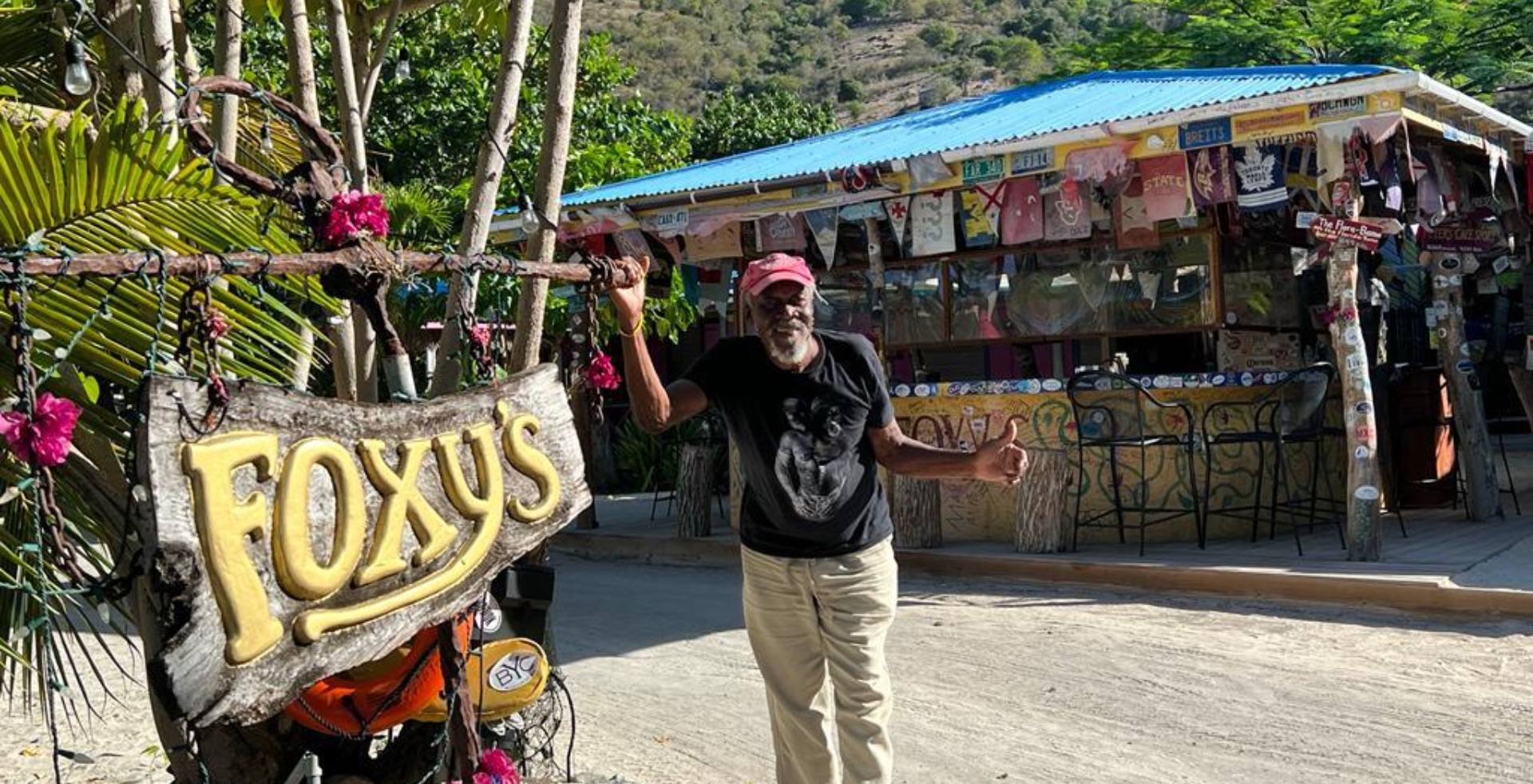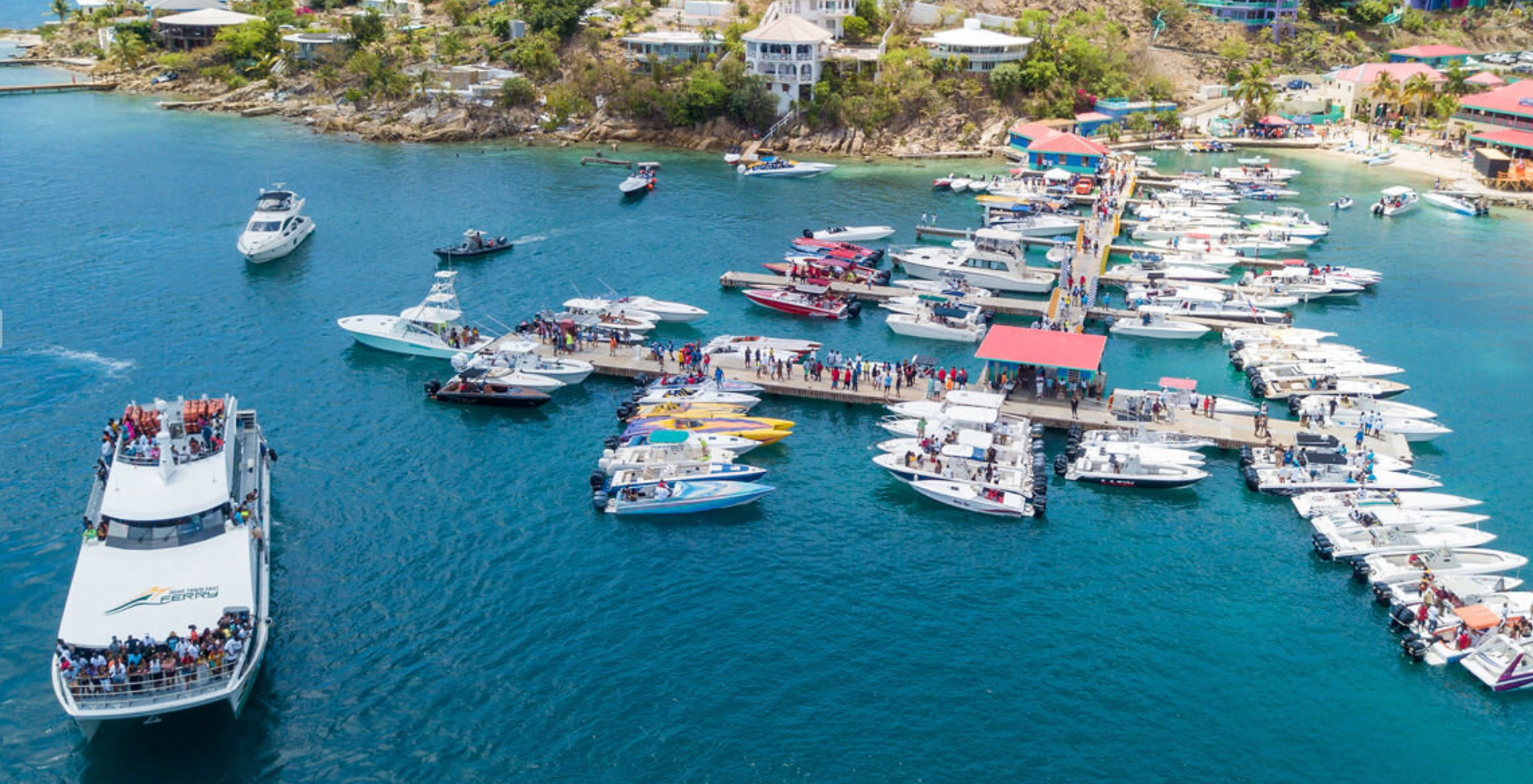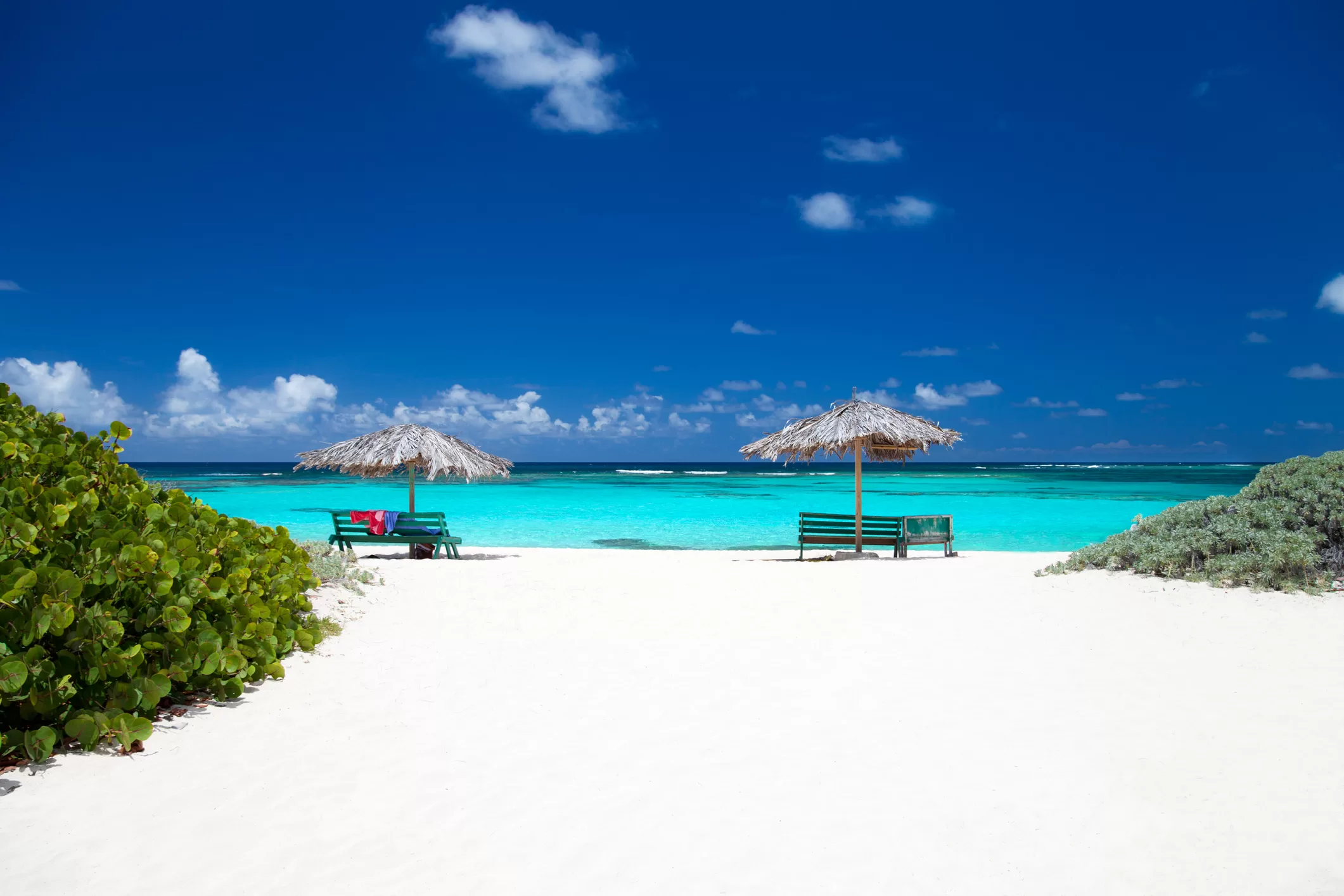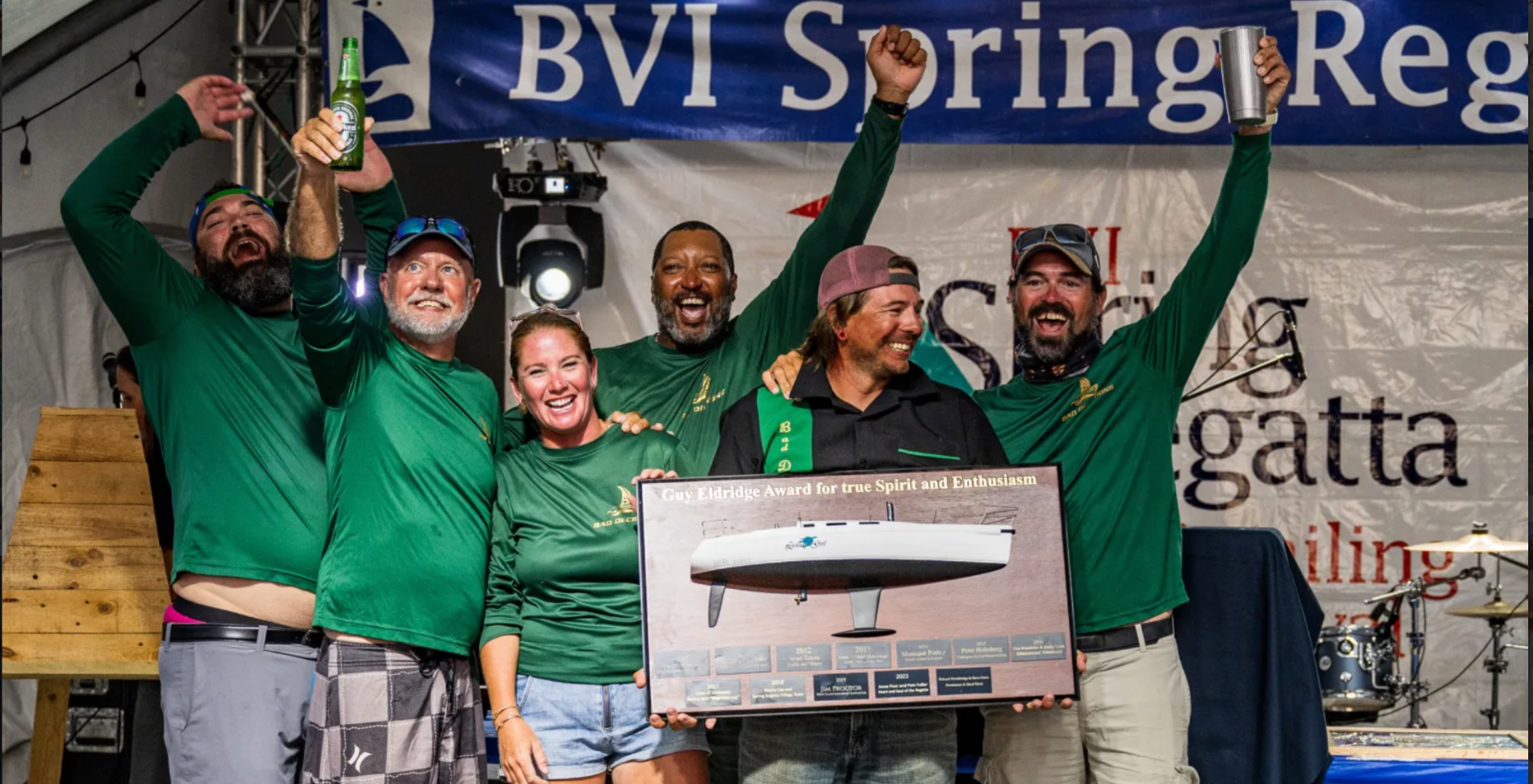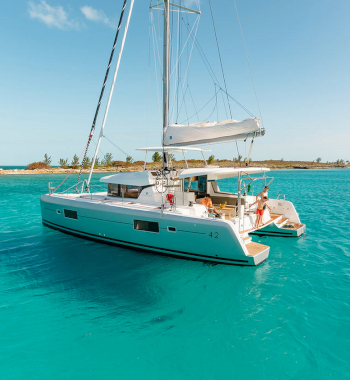BVI Wall Murals Are Open-air Museums
by Jane Bakewell
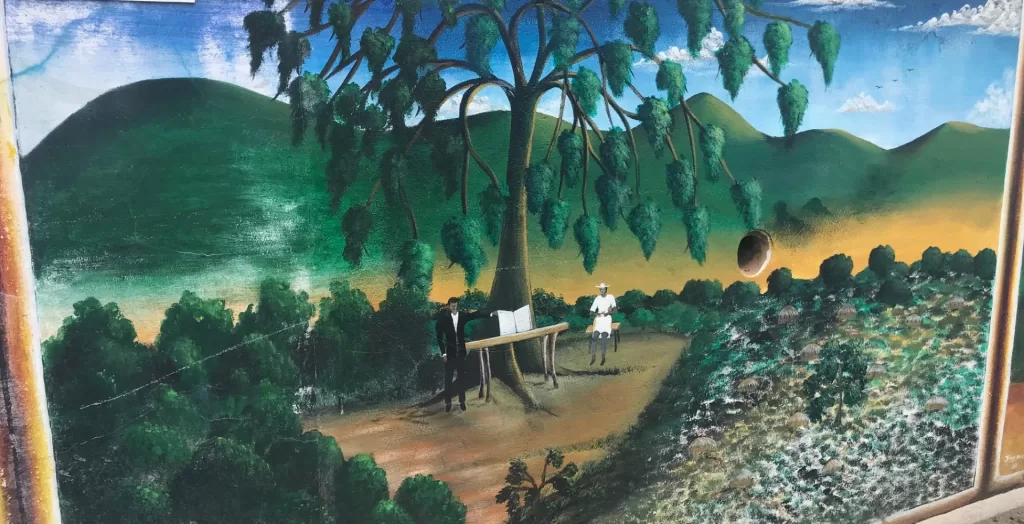
Beautiful weather (for the most part), year-round in the BVI lends itself to life lived outdoors: restaurant tables by the sea, bars on the beaches, fruit and vegetable vendors by the roadside, even the wide-open doors of the brightly colored Crafts Alive Village with their displays of bright apparel. So, it should not come as a surprise that BVI cultural heritage also enjoys an outdoor life in the form of murals.
Displayed on large concrete retaining walls, these now iconic “open-air museums” line Tortola’s hills in various communities telling a story while undergirding landscape susceptible to seasonal storms and high winds. You might call this “eco-sustainable art.”
The largest and most well-known wall mural is the Fahie Hill or Ridge Road mural, weaving along the high mountain Ridge Road. It comprises 23 connected painted panels depicting community life in the islands around the 1950s. Local well-known artist, Rubin Vanterpool painted nine of the panels and outlined the general theme, enlisting other artists including popular musician and song writer, Quito Rhymer, to complete his sketches of hillside village life at that time.
This mural completed in 2001, was the original inspiration of one of the BVI’s Cultural and Historical icons, Eileen Parsons, who was head of Ministry of Culture at the time. The Idea was that these blank, large concrete canvasses could be a “repository for cultural images pertaining to the area.” Each panel depicts what was a significant part of life “in those days” including agriculture, fishing, farming, cattle raising, baking, outdoor schools, music and sugar cane harvested for rum production.
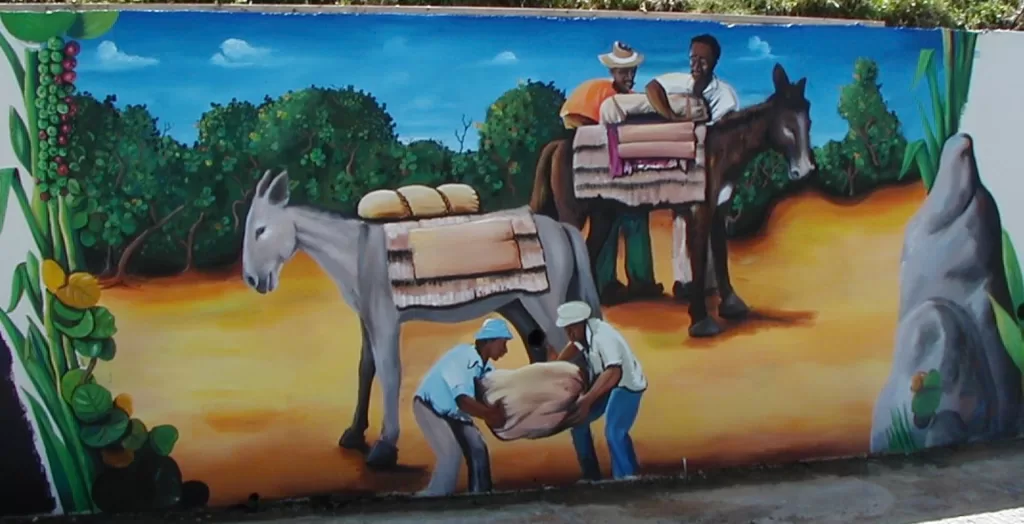
After slavery was abolished in the British Empire in1834 and up through the mid-60s these hill-top farming communities were considered the “glory days of sugar cane.” Rum distilleries were kept busy in cane cutting season and were a profitable crop. Along with that bread baking was normal for most households with an outdoor brick oven and wood fire. Cassava bread, known locally as “Bong Bong” was shredded and baked on round raised baking molds. Donkeys were the main form of transport and fish caught in the sea were loaded on these agile, beasts of burden and brought up the winding hill roads to the villages.
Heading west along the coast to explore the north shore coastal villages, take your time cruising slowly down Zion Hill for another captivating cultural mural. Talented local artist, Franklin Hodge took on the artistic challenge of painting walls that are 20 feet high! With an extended pole he was able to paint atmosphere and then descend to village life detail in the multi-panel story. Many of the same themes are represented here along with boat building, coal pits and a large striking woman with a basket of bread on her head. Legend has it the baker was a woman from Cane Garden Bay, who walked the hills to Apple Bay to bring her fresh baked bread to the community.

Two more murals, these located on the East End of the island, blend community life with the important impact the Christian church had on the community. In Long Look, the historic Nottingham Estate has a rich story to tell. This estate was the site of the oldest “free black community” in the western world. In 1776, Samuel Nottingham, a Quaker, passed on 50 acres to his 25 slaves to cultivate “for the common good. Full emancipation did not come to the British Virgin Islands until 1834.

The first Methodist missionaries arrived in 1789, and a first small chapel was erected in 1811. The wall depicts the various evolutions of the Methodist Church, along with the early church builders in the1830s and completion of the first prayer house in 1840. The retaining wall supports the grounds of one of the earliest Methodist churches, which served also as a key contributor to the education of the community.
The panel also depicts the brutal hurricane of 1819 named variously St. Matthew or San Mateo, which destroyed many houses in the community. With great resilience, the village rebuilt. The 20 panels painted by another local talent, Vincent “Bing” Malone, commemorates the most significant moments of Long Look history carefully preserved by the Long Look Heritage Society.
Lastly traveling east towards Beef Island and the airport is another historic Methodist Church on Chapel Hill, which commissioned the wall mural just across the road. Here one can see other community traditions such as wedding ceremonies, baptism, outdoor schools and the many fun games children enjoy at play. Each mural wall reflects the unique customs of that particular community.
So, drive slowly and plan in advance to take visual advantage of these wonderful outdoor cultural museums. There is no fee to visit these outdoor cultural museums.
Editor’s Note:
To find the Ridge Road Mural drive through Huntum’s Ghut at the back of Road Town and go up the Great Mountain Road. At the Ridge Road turn right. The mural will be located a mile or two along the Ridge Road on the right, just before you reach a small park.
The Zion Hill mural is on the Zion Hill Road. From Road Town follow the West End Coast Road west and turn right at BBG gas station. The mural starts on the other side of the brow of the hill.
The East End Methodist Church is located in Long Look. From the coast road go up the Little Dicks Road adjacent to the Police Station. The mural wall begins on the first major road on the left, below the East End Methodist Church, leading up to “The Stickett” a large outdoor gazebo.
The Methodist Church on Chapel Hill is on the East End Coast Road shortly before the Queen Elizabeth Bridge to Beef Island on the right. The mural is just across the road.

